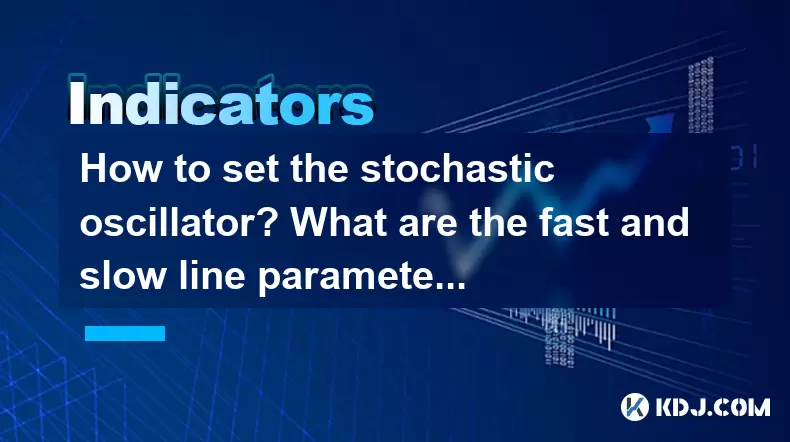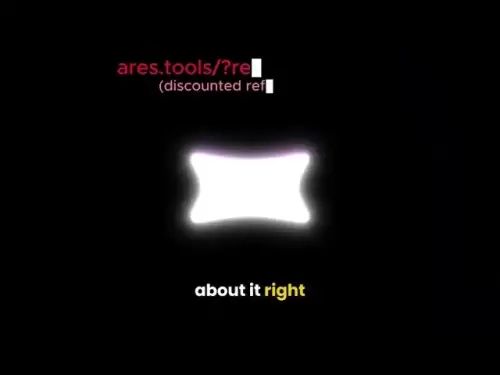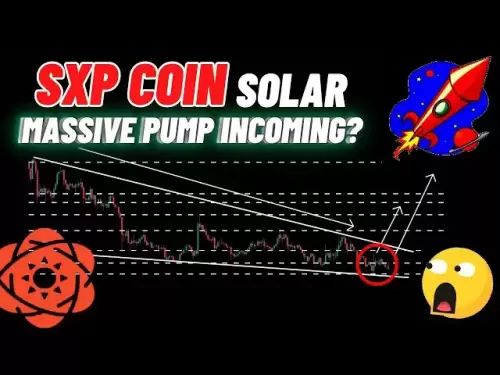-
 Bitcoin
Bitcoin $117500
2.04% -
 Ethereum
Ethereum $3759
3.02% -
 XRP
XRP $3.171
3.30% -
 Tether USDt
Tether USDt $1.000
0.03% -
 BNB
BNB $782.4
2.52% -
 Solana
Solana $187.2
5.62% -
 USDC
USDC $0.0000
0.02% -
 Dogecoin
Dogecoin $0.2380
5.26% -
 TRON
TRON $0.3175
1.07% -
 Cardano
Cardano $0.8227
4.03% -
 Hyperliquid
Hyperliquid $44.50
5.44% -
 Sui
Sui $4.020
10.07% -
 Stellar
Stellar $0.4396
6.28% -
 Chainlink
Chainlink $18.32
4.55% -
 Hedera
Hedera $0.2628
10.71% -
 Bitcoin Cash
Bitcoin Cash $554.8
4.90% -
 Avalanche
Avalanche $24.20
4.60% -
 Litecoin
Litecoin $113.7
2.31% -
 Shiba Inu
Shiba Inu $0.00001413
5.99% -
 UNUS SED LEO
UNUS SED LEO $8.984
0.11% -
 Toncoin
Toncoin $3.326
7.22% -
 Ethena USDe
Ethena USDe $1.001
0.00% -
 Uniswap
Uniswap $10.49
4.56% -
 Polkadot
Polkadot $4.092
4.02% -
 Monero
Monero $326.6
1.30% -
 Dai
Dai $1.000
-0.01% -
 Bitget Token
Bitget Token $4.570
2.49% -
 Pepe
Pepe $0.00001267
5.10% -
 Aave
Aave $297.3
3.10% -
 Cronos
Cronos $0.1344
4.10%
How to set the stochastic oscillator? What are the fast and slow line parameters?
The stochastic oscillator, ranging from 0 to 100, uses %K and %D lines to signal overbought (>80) and oversold (<20) conditions in crypto trading.
May 29, 2025 at 10:49 am

The stochastic oscillator is a popular momentum indicator used in the cryptocurrency trading world to predict price movements by comparing the closing price of a cryptocurrency to its price range over a certain period. Understanding how to set up and interpret the stochastic oscillator is crucial for traders looking to make informed decisions. In this article, we will delve into the process of setting up the stochastic oscillator, discuss the parameters of the fast and slow lines, and explore how these settings can be optimized for cryptocurrency trading.
Understanding the Stochastic Oscillator
The stochastic oscillator is based on the premise that in an uptrend, prices tend to close near the high, and in a downtrend, prices tend to close near the low. The formula for the stochastic oscillator involves two lines: the %K line (fast line) and the %D line (slow line). These lines help traders identify potential overbought and oversold conditions in the market. The oscillator ranges between 0 and 100, with readings above 80 typically indicating overbought conditions and readings below 20 indicating oversold conditions.
Setting Up the Stochastic Oscillator
To set up the stochastic oscillator on your trading platform, follow these steps:
- Open your trading platform and navigate to the indicators section. This is usually found under a tab labeled "Indicators" or "Studies."
- Search for the stochastic oscillator. It may be listed as "Stochastic" or "Stochastic Oscillator."
- Click on the stochastic oscillator to add it to your chart. A settings window will appear, allowing you to customize the parameters.
- Adjust the parameters for the %K and %D lines. The default settings are often 14 for the %K period, 3 for the %D period, and 3 for the smoothing period. However, these can be adjusted based on your trading strategy.
- Confirm the settings and apply the oscillator to your chart. The stochastic oscillator will now appear on your chart, displaying the %K and %D lines.
Fast Line (%K) Parameters
The fast line, or %K, is the primary line of the stochastic oscillator. It measures the current price relative to the high-low range over a specified period. The default setting for the %K period is typically 14, which means the oscillator calculates the highest high and lowest low over the last 14 periods.
- A shorter %K period (e.g., 5 or 10) will make the oscillator more sensitive to price changes, potentially leading to more frequent buy and sell signals.
- A longer %K period (e.g., 20 or 25) will smooth out the oscillator, reducing the frequency of signals but potentially increasing their reliability.
Slow Line (%D) Parameters
The slow line, or %D, is a moving average of the %K line, typically calculated over three periods. The %D line helps to smooth out the fluctuations of the %K line, providing a more reliable signal for traders. The default setting for the %D period is usually 3, but this can be adjusted to suit different trading strategies.
- A shorter %D period (e.g., 1 or 2) will make the %D line more responsive to changes in the %K line, potentially leading to more trading signals.
- A longer %D period (e.g., 5 or 7) will smooth out the %D line, reducing the frequency of signals but potentially increasing their accuracy.
Optimizing Stochastic Oscillator Settings for Cryptocurrency Trading
Cryptocurrency markets are known for their volatility, which can affect the effectiveness of technical indicators like the stochastic oscillator. To optimize the stochastic oscillator for cryptocurrency trading, consider the following adjustments:
- Short-term trading: For traders focusing on short-term price movements, consider using a shorter %K period (e.g., 5 or 10) and a shorter %D period (e.g., 1 or 2). This setup will make the oscillator more sensitive to price changes, allowing for quicker entry and exit points.
- Long-term trading: For traders with a longer-term perspective, a longer %K period (e.g., 20 or 25) and a longer %D period (e.g., 5 or 7) may be more suitable. This setup will smooth out the oscillator, reducing false signals and providing more reliable trading opportunities.
- Volatility adjustments: During periods of high volatility, consider adjusting the %K period to a shorter timeframe to capture rapid price movements. Conversely, during periods of low volatility, a longer %K period may be more effective in filtering out noise.
Interpreting the Stochastic Oscillator
Understanding how to interpret the stochastic oscillator is essential for making informed trading decisions. Here are some key points to consider:
- Overbought and oversold conditions: When the oscillator rises above 80, it indicates that the cryptocurrency may be overbought, suggesting a potential price correction. Conversely, when the oscillator falls below 20, it suggests that the cryptocurrency may be oversold, indicating a potential price rebound.
- Crossovers: A bullish signal occurs when the %K line crosses above the %D line, especially when both lines are below 20. A bearish signal occurs when the %K line crosses below the %D line, particularly when both lines are above 80.
- Divergence: If the price of the cryptocurrency is making new highs while the stochastic oscillator is making lower highs, it may indicate a bearish divergence, suggesting a potential price reversal. Conversely, if the price is making new lows while the oscillator is making higher lows, it may indicate a bullish divergence, suggesting a potential upward reversal.
Frequently Asked Questions
Q: Can the stochastic oscillator be used alone for trading decisions?
A: While the stochastic oscillator is a powerful tool, it is generally recommended to use it in conjunction with other indicators and analysis methods. Relying solely on the stochastic oscillator may lead to false signals, especially in highly volatile markets like cryptocurrencies.
Q: How often should I adjust the stochastic oscillator settings?
A: The frequency of adjusting the stochastic oscillator settings depends on your trading strategy and the market conditions. For short-term traders, more frequent adjustments may be necessary to adapt to rapid price changes. Long-term traders may need to adjust settings less often, focusing on broader market trends.
Q: Is the stochastic oscillator more effective for certain types of cryptocurrencies?
A: The effectiveness of the stochastic oscillator can vary depending on the volatility and trading volume of the cryptocurrency. It may be more effective for cryptocurrencies with higher liquidity and trading volume, as these markets tend to have more reliable price movements and less noise.
Q: Can the stochastic oscillator be used for all timeframes?
A: Yes, the stochastic oscillator can be used across various timeframes, from short-term charts like 1-minute or 5-minute intervals to longer-term charts like daily or weekly intervals. The key is to adjust the %K and %D periods according to the timeframe to ensure the oscillator provides relevant signals.
Disclaimer:info@kdj.com
The information provided is not trading advice. kdj.com does not assume any responsibility for any investments made based on the information provided in this article. Cryptocurrencies are highly volatile and it is highly recommended that you invest with caution after thorough research!
If you believe that the content used on this website infringes your copyright, please contact us immediately (info@kdj.com) and we will delete it promptly.
- Pi Coin, Wallet Features, and Coinbase: What's the Buzz?
- 2025-07-26 18:30:12
- Worldcoin, Punisher Coin, and the Meme Coin Mania: What's the Haps?
- 2025-07-26 18:30:12
- Conviction, Justice System, and Murders: A Look at Recent Cases and Shifting Perspectives
- 2025-07-26 18:50:11
- Shiba Inu, Remittix, and the Market Surge: What's the Hype?
- 2025-07-26 19:10:12
- Cardano Price, ADA Holders, and Leadership Criticism: What's the Real Deal?
- 2025-07-26 19:30:12
- MicroStrategy, Bitcoin, and XRP Whale Dumps: What's the Deal?
- 2025-07-26 19:30:12
Related knowledge

What does it mean that the rebound is blocked after the moving average is arranged in a short position for the first time?
Jul 26,2025 at 10:51am
Understanding the Short-Term Moving Average ConfigurationWhen traders refer to a 'short position arrangement' in moving averages, they are describing ...

What does it mean that the parabolic indicator and the price break through the previous high at the same time?
Jul 26,2025 at 07:22pm
Understanding the Parabolic Indicator (SAR)The Parabolic SAR (Stop and Reverse) is a technical analysis tool developed by J. Welles Wilder to identify...

What does it mean when the price rises along the 5-day moving average for five consecutive days?
Jul 26,2025 at 08:07am
Understanding the 5-Day Moving Average in Cryptocurrency TradingThe 5-day moving average (5DMA) is a widely used technical indicator in cryptocurrency...

What does it mean when ADX breaks through 25 and +DI continues to rise?
Jul 26,2025 at 07:00pm
Understanding the ADX Indicator and Its ThresholdsThe Average Directional Index (ADX) is a technical analysis tool used to measure the strength of a t...

What does it mean when the price breaks through the 60-day moving average with a large volume but shrinks the next day?
Jul 26,2025 at 06:01am
Understanding the 60-Day Moving Average in Cryptocurrency TradingThe 60-day moving average (60DMA) is a widely used technical indicator in the cryptoc...

What does the sudden rise of ADX in DMI accompanied by +DI crossing -DI indicate?
Jul 26,2025 at 01:21pm
Understanding the DMI and Its Core ComponentsThe Directional Movement Index (DMI) is a technical analysis tool used to determine the presence and stre...

What does it mean that the rebound is blocked after the moving average is arranged in a short position for the first time?
Jul 26,2025 at 10:51am
Understanding the Short-Term Moving Average ConfigurationWhen traders refer to a 'short position arrangement' in moving averages, they are describing ...

What does it mean that the parabolic indicator and the price break through the previous high at the same time?
Jul 26,2025 at 07:22pm
Understanding the Parabolic Indicator (SAR)The Parabolic SAR (Stop and Reverse) is a technical analysis tool developed by J. Welles Wilder to identify...

What does it mean when the price rises along the 5-day moving average for five consecutive days?
Jul 26,2025 at 08:07am
Understanding the 5-Day Moving Average in Cryptocurrency TradingThe 5-day moving average (5DMA) is a widely used technical indicator in cryptocurrency...

What does it mean when ADX breaks through 25 and +DI continues to rise?
Jul 26,2025 at 07:00pm
Understanding the ADX Indicator and Its ThresholdsThe Average Directional Index (ADX) is a technical analysis tool used to measure the strength of a t...

What does it mean when the price breaks through the 60-day moving average with a large volume but shrinks the next day?
Jul 26,2025 at 06:01am
Understanding the 60-Day Moving Average in Cryptocurrency TradingThe 60-day moving average (60DMA) is a widely used technical indicator in the cryptoc...

What does the sudden rise of ADX in DMI accompanied by +DI crossing -DI indicate?
Jul 26,2025 at 01:21pm
Understanding the DMI and Its Core ComponentsThe Directional Movement Index (DMI) is a technical analysis tool used to determine the presence and stre...
See all articles

























































































